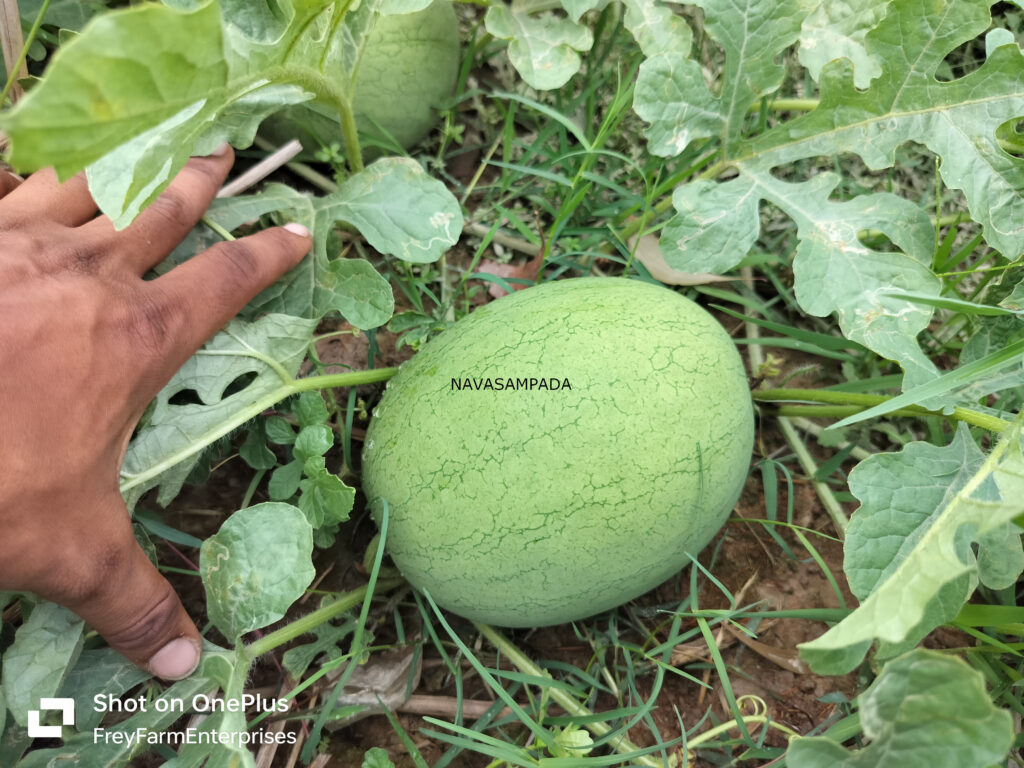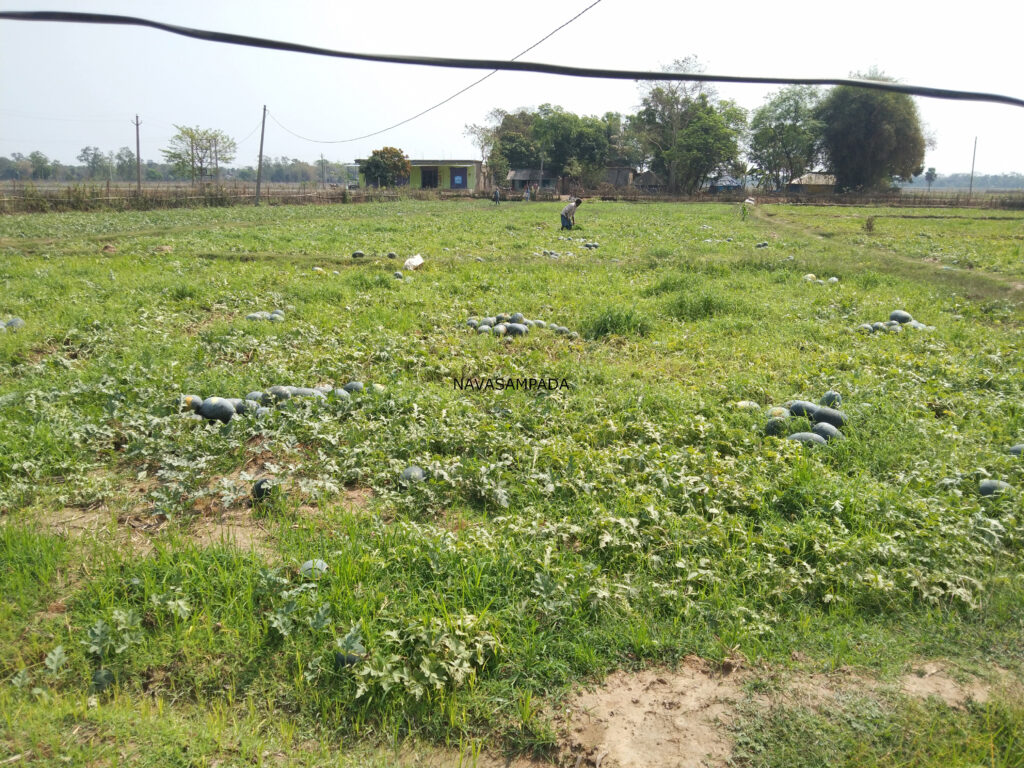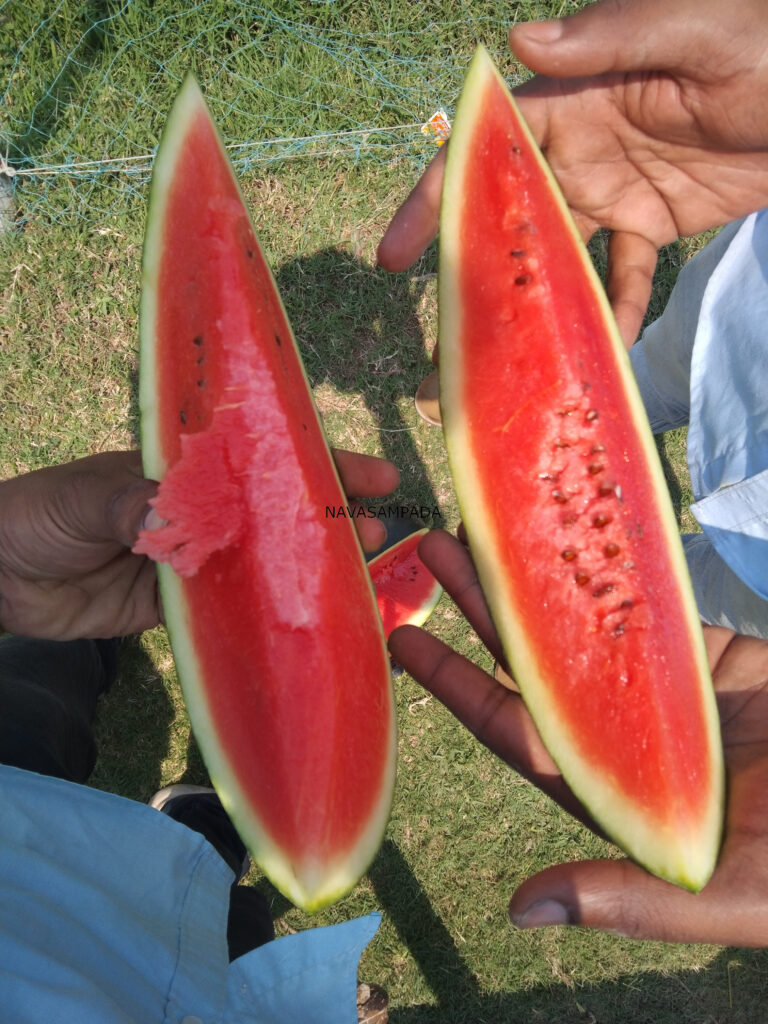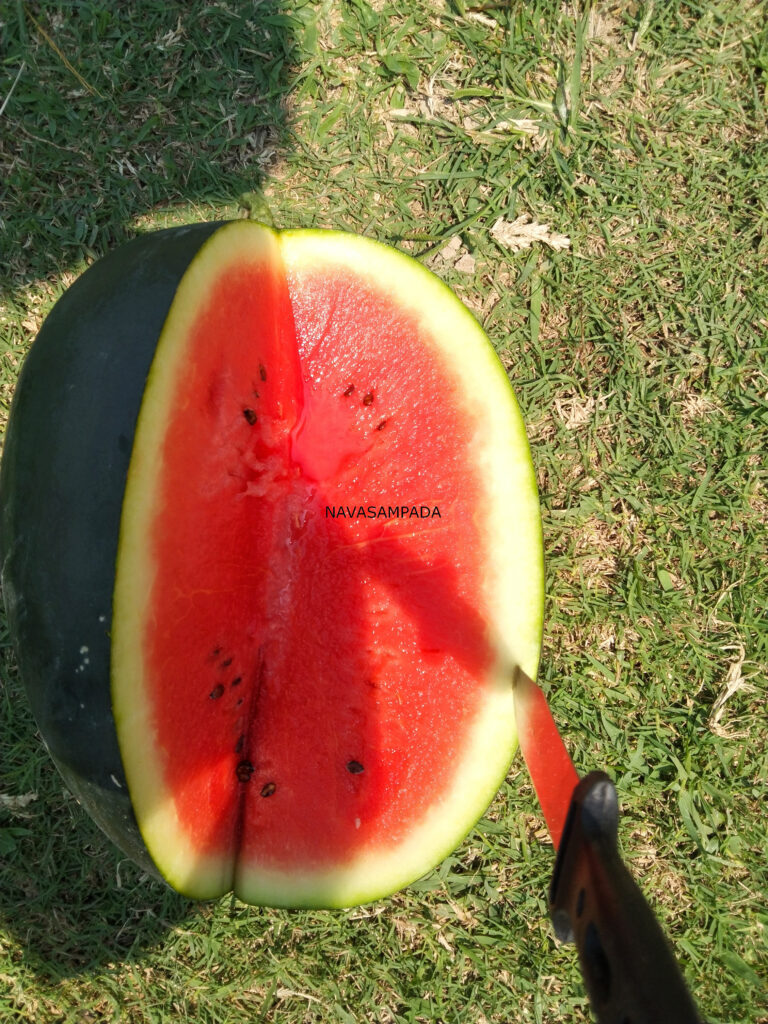Watermelon farming can be a rewarding and profitable venture with the right knowledge, preparation, and care throughout the growing season. Here’s a simplified, easy-to-read guide to help you grow healthy, sweet watermelons from start to finish.
Climate and Soil Requirements
Watermelons thrive in warm climates with temperatures ranging from 70°F to 85°F (21°C to 29°C). They need a long growing season, free from frost.
Soil: Choose well-drained, sandy loam soil with a pH of 6.0–7.5. The soil should be rich in organic matter for good root growth.
Choosing the Right Variety
Selecting the correct variety is crucial to success. Common types include:
Seeded Watermelons: Easier to grow and often more resilient.
Seedless Watermelons: Popular for their sweetness but require pollination from nearby plants.
Consider factors like fruit size, taste, and disease resistance when choosing your variety.


Land Preparation
Before planting, you need to properly prepare the soil:
Tilling: Till the soil 2–3 times to break up clods and improve aeration. Remove any rocks, weeds, or debris.
Fertilization: Apply well-rotted manure or compost to add nutrients. A balanced fertilizer can also be applied to ensure healthy seedlings.
Planting the Seeds
Watermelons are best planted when the soil temperature reaches around 70°F (21°C), usually in late spring.
Spacing: Plant watermelon seeds in rows with 4–5 feet between plants and 8–10 feet between rows. This provides space for the vines to spread.
Planting Depth: Seeds should be planted about 1 inch deep. Thin seedlings after they sprout, leaving only the strongest plant in each spot.
Watering
Watermelons need consistent moisture, especially during germination and fruit development, but they do not like standing water.
Irrigation: Use drip irrigation or soaker hoses to water at the base of the plant and avoid wetting the leaves. This reduces the risk of disease.
Watering Schedule: Keep the soil moist throughout the growing season, but cut back on watering as the fruit matures to improve sweetness and avoid cracking.
Fertilization
Watermelons require different nutrients at different stages of growth.
Pre-planting: Use a nitrogen-rich fertilizer to encourage strong seedling growth.
Side-Dressing: After the vines begin to grow, apply additional nitrogen and potassium to support healthy vine development.
Fruit Development: Once the fruits form, reduce nitrogen and focus on phosphorus and potassium to promote sweet, well-developed melons.
Weed Control
Weeds can compete with watermelons for water and nutrients, so it’s important to keep them under control.
Mulching: Apply mulch (such as straw or grass clippings) to suppress weeds, conserve moisture, and keep the fruit clean.
Manual Weeding: Regularly remove any weeds that grow around the plants.
Pest and Disease Management
Watermelons can be affected by various pests and diseases. Keep an eye out for common issues:
Pests: Aphids, cucumber beetles, and squash bugs can damage your crop. Use natural pest control methods like introducing beneficial insects or applying insecticidal soap when necessary.
Diseases: Watermelons are susceptible to fungal diseases like powdery mildew, downy mildew, and fusarium wilt. Apply fungicides when needed, and remove infected plants to prevent the spread of disease.
Pollination
Watermelons rely on bees for pollination. To increase pollination rates:
Encourage Bees: Plant nearby flowering plants to attract pollinators. You may also consider introducing hives if your farm is far from natural pollinator habitats.
Male and Female Flowers: Ensure both male and female flowers bloom around the same time for successful pollination. Female flowers have a small swelling at the base that eventually develops into the fruit.
Managing Growth
Watermelon vines can grow extensively, so managing their growth is important to prevent overcrowding and ensure healthy fruit production.
Pruning: Trim excess vines to direct energy toward producing larger fruits.
Fruit Thinning: To encourage the growth of larger watermelons, remove smaller or less-developed fruits early on, leaving only 2–3 per vine.
Harvesting
Watermelons usually mature in 70 to 90 days, depending on the variety. Here’s how to tell when they’re ready:
Signs of Ripeness: A ripe watermelon will have a dull skin (not shiny) and a yellowish spot on the bottom where it sat on the ground. The tendril near the stem should also be dry and brown.
Harvesting: Cut the fruit from the vine with a sharp knife, leaving a small portion of the stem attached.
Post-Harvest Handling
After harvesting, proper storage and handling are key to extending shelf life and ensuring quality.
Storage: Store watermelons in a cool, dry place to keep them fresh. For longer storage, refrigeration can help, but it may slightly affect the flavor.
Marketing and Sales: Watermelons can be sold fresh at markets, grocery stores, or directly to consumers. You can also explore value-added products like watermelon juice, preserves, or dried watermelon.
Crop Rotation
To maintain soil health and reduce pest buildup, practice crop rotation. Avoid planting watermelons in the same spot each year. Rotate with non-cucurbit crops like legumes or corn.


Tips for Success
Climate: Watermelons need warm temperatures between 70°F and 85°F (21°C to 29°C) and are very frost-sensitive, so plant them after the last frost date.
Regular Monitoring: Keep a close eye on your crops for early signs of pests or disease. Regularly scout your plants and take action before problems get out of control.
Record Keeping: Maintain detailed records of planting dates, varieties, fertilizers, and harvest dates. This will help you optimize your future watermelon crops.
10 Incredible Health Benefits of This Refreshing Summer Fruit
This juicy, hydrating fruit is not only a summertime favorite but also a powerhouse of nutrients, offering a variety of health benefits. Packed with vitamins, minerals, and antioxidants, it’s a great choice for anyone looking to stay refreshed and healthy. Here are 10 amazing health benefits of this delicious, hydrating fruit:
1. Promotes Hydration
Due to its high water content (over 90%), this fruit is an excellent choice for staying hydrated, especially during hot weather. Proper hydration is essential for maintaining energy levels, regulating body temperature, and supporting healthy skin.
2. Supports Heart Health
This fruit contains potassium, a mineral known to help regulate blood pressure. Consuming foods rich in potassium can help reduce the risk of high blood pressure, which in turn reduces the likelihood of heart disease. The citrulline in the fruit also supports blood vessel function, improving circulation.
3. Rich in Antioxidants
Packed with lycopene—an antioxidant that gives the fruit its vibrant red color—this fruit helps combat free radicals in the body. Lycopene is linked to a reduced risk of chronic diseases such as cancer and heart disease, and it has anti-inflammatory properties that contribute to overall wellness.
4. Boosts Immune System
Loaded with vitamin C, this fruit strengthens the immune system by boosting the production of white blood cells that help fight infections. Vitamin C also plays a vital role in collagen production, keeping skin, blood vessels, and bones strong.
5. Aids Digestion
This fruit is an excellent source of fiber, which is essential for maintaining healthy digestion. The fiber helps regulate bowel movements, prevent constipation, and promote a healthy gut microbiome. A well-functioning digestive system is crucial for absorbing nutrients and eliminating toxins.
6. Supports Skin Health
The high levels of vitamin C and lycopene in this fruit make it a great choice for promoting healthy skin. Vitamin C helps produce collagen, improving skin elasticity and reducing the appearance of wrinkles. Additionally, lycopene can protect the skin from harmful UV radiation and reduce sunburn.
7. Helps with Weight Management
Low in calories but high in water and fiber, this fruit is an excellent option for those looking to manage their weight. The water content helps you feel fuller for longer, reducing hunger pangs and preventing overeating. It’s a great addition to a healthy diet for weight control.
8. Improves Eye Health
This fruit contains beta-carotene, which the body converts into vitamin A. Vitamin A is essential for maintaining good vision, preventing night blindness, and reducing the risk of macular degeneration. A diet rich in beta-carotene can help protect your eyes as you age.
9. Relieves Muscle Soreness
The citrulline found in this fruit has been shown to help alleviate muscle soreness and improve recovery after exercise. It works by increasing the amount of nitric oxide in the blood, which improves blood flow to muscles and helps reduce the build-up of lactic acid.
10. Enhances Kidney Health
The high water content in this fruit helps promote kidney function by encouraging increased urine output. Proper hydration supports the kidneys’ ability to flush out toxins and maintain electrolyte balance in the body, reducing the risk of kidney stones and urinary tract infections (UTIs).
Conclusion
This fruit is a true nutritional powerhouse, offering a wide range of benefits from promoting hydration to supporting heart, skin, and digestive health. Packed with essential vitamins and antioxidants, it’s an excellent addition to any diet, especially during the warmer months. Whether enjoyed on its own, blended into smoothies, or added to salads, this refreshing fruit can help you stay healthy, hydrated, and energized.
With careful attention to detail, proper soil management, and the right timing, watermelon farming can be a successful and profitable endeavor.